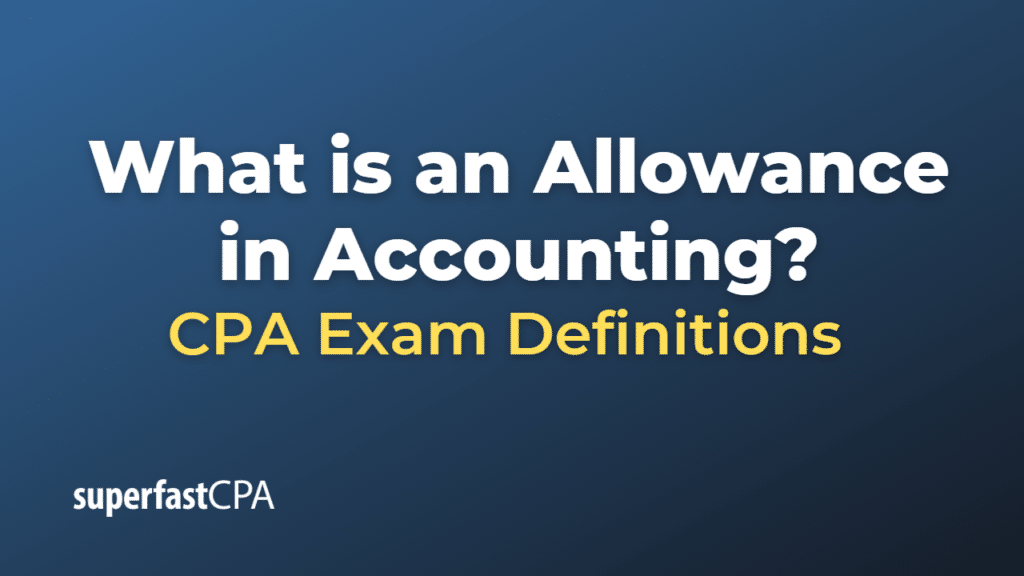Allowance
An allowance in accounting refers to an estimated amount set aside to account for future expenses, potential losses, or reductions in asset values. Allowances are used to create a more accurate representation of a company’s financial position by anticipating future events that may impact the financial statements. Common types of allowances include:
- Allowance for doubtful accounts: This allowance estimates the portion of accounts receivable that may not be collected due to customer defaults or non-payments. It is reported as a contra-asset account, reducing the total accounts receivable balance on the balance sheet.
- Allowance for sales returns and allowances: This allowance anticipates the potential for customers to return goods or request discounts, credits, or other adjustments on their purchases. It is typically reported as a reduction to sales revenue on the income statement.
- Allowance for depreciation: Also known as accumulated depreciation, this allowance represents the estimated decrease in the value of a tangible asset over time due to wear and tear, obsolescence, or other factors. It is reported as a contra-asset account, reducing the carrying value of the related asset on the balance sheet.
- Allowance for inventory obsolescence: This allowance estimates the portion of inventory that may become unsellable due to damage, spoilage, or becoming outdated. It is reported as a contra-asset account, reducing the inventory balance on the balance sheet.
By setting up allowances, a company can better manage its cash flows, financial reporting, and decision-making, as well as comply with accounting standards such as the Generally Accepted Accounting Principles (GAAP) or International Financial Reporting Standards (IFRS).
Example of an Allowance
et’s consider an example of an allowance for doubtful accounts.
Company XYZ has total accounts receivable of $100,000. Based on its historical experience and current economic conditions, the company estimates that 5% of its accounts receivable may not be collectible. To account for this anticipated loss, the company creates an allowance for doubtful accounts.
Here’s how the company records the allowance for doubtful accounts:
- The company records a journal entry to create the allowance:
- Debit: Bad Debt Expense (Income Statement) – $5,000 (5% of $100,000)
- Credit: Allowance for Doubtful Accounts (Balance Sheet) – $5,000
- The balance sheet now reflects the following:
- Accounts Receivable: $100,000
- Less: Allowance for Doubtful Accounts: $5,000
- Net Accounts Receivable: $95,000
By creating an allowance for doubtful accounts, Company XYZ is recognizing that some portion of its accounts receivable may not be collected, and adjusting its financial statements accordingly. This approach provides a more accurate representation of the company’s financial position and helps management and investors make more informed decisions.












